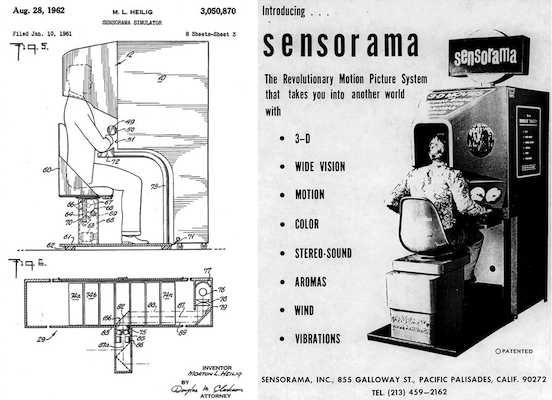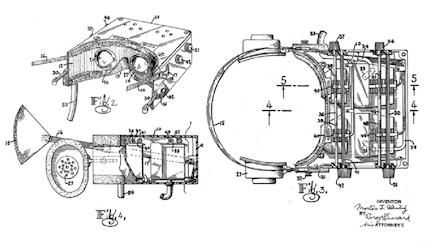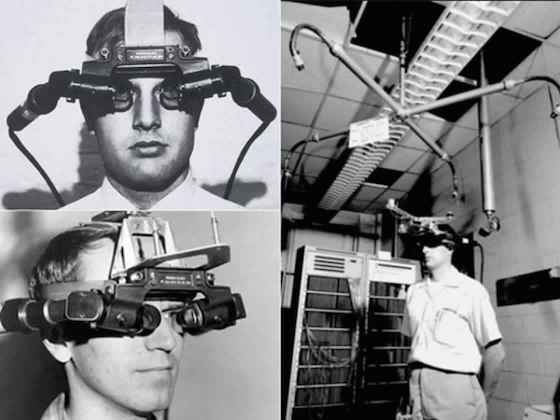Virtual reality (VR) and augmented reality (AR) have emerged as groundbreaking technologies that are reshaping our digital experiences. By immersing users in virtual environments or enhancing the real world with digital overlays, VR and AR offer endless possibilities in various fields. From entertainment and gaming to productivity, education, training, and everything in between, there is an option to improve your company’s performance and your users’ experience.
But while the latest advances in these technologies are all the buzz right now, VR and AR are not new. Let’s walk down memory lane and highlight some of the most relevant VR and AR events — and see how Apple once again intends to shape a new reality with the introduction of the Vision Pro at WWDC ’23.
Virtual Reality
The concept of virtual reality can be traced back to the mid-1950s, when cinematographer Morton Heilig developed the Sensorama, an arcade-style sensory theater cabinet. This machine could display stereoscopic 3D images in a wide-angle view, move according to the picture being shown, and even create wind and aromas during the film to immerse the viewer in the presentation.

Heilig’s Sensorama idea didn’t get much traction. However, in 1962 he patented what would certainly dictate the design route for upcoming VR headsets: the first head-mounted display (HMD), called the Telesphere Mask. Similar to the Sensorama, the device provided stereoscopic 3D images with wide vision and stereo sound, but it did not include motion-sensing tracking systems.

In 1968, computer scientist Ivan Sutherland and his student Bob Sproull developed the first HMD system connected to a computer, called the Sword of Damocles. The device consisted of two electron-ray tubes mounted on either side of the user’s head, with mirrors to project the image in front of their eyes. The headset showed simple cube shapes generated by a computer.
When the operator turned their head, sensors on the headset would relay this information to the computer, which automatically redrew the 3D model to adjust to the new perspective. Although very slow by modern standards, it was reportedly close enough to real-time to give a convincing impression of standing inside a virtual environment. However, the whole setup was so heavy that the headset had to be suspended from the ceiling (like the mythical sword of Damocles).

Due to the technological limitations and high production costs, VR remained confined to labs and military research for decades. In the late ’70s, for example, McDonnell-Douglas Corporation launched the VITAL helmet for the military. VITAL was a VR HMD that followed the pilot’s eye movements to match computer-generated images, and its goal was to improve the military’s training capabilities and pilot skills.
In the late 1980s, Thomas A. Furness developed the Super Cockpit, a flight training simulator that featured computer-generated 3D maps and advanced infrared and radar imagery. It allowed the pilot to see and hear in real time, and its tracking system and other sensors let the pilot control the aircraft using gestures, speech, and eye movements, making the training exercise more real.
Since the early ’90s, the military and companies like SEGA, Nintendo, Virtual IO, and many others in the gaming industry have pushed the boundaries of VR and its usability. But it was not until the 2010s that affordable and consumer-friendly VR devices finally reached the market. Oculus Rift, a VR headset developed by Oculus VR, gained significant attention after a successful Kickstarter campaign in 2012 and its subsequent acquisition by Facebook in 2014. This marked a turning point for VR, and major players like HTC, Sony, and Samsung jumped into the field. Now, Apple is entering the market with its own VR headset, Vision Pro, and it promises to take consumer VR one step further.
Augmented Reality
While VR tech was making strides, AR had to wait its turn. Augmented reality, or AR, involves overlaying digital content onto the real world, creating interactive and immersive experiences. It was only in 1990 that Tom Caudell and David Mizell, two Boing computer science researchers, came up with the name “augmented reality” when they built an HMD for aircraft construction workers that overlaid the position of cables through the eyewear and projected them onto the boards.
In 1992, Louis Rosenburg created the Virtual Fixture, an AR tool that allowed military personnel to virtually control and guide machinery to perform risky tasks from a safer environment during training or real-time exercises. And in 1998, the NFL broadcast live the first game using the now-familiar virtual first and ten graphic system that overlays a yellow line on the field to mark the distance to a first down.
By the early ’00s, AR games were making their debut. AR Quake was the first outdoor AR game; using a gyroscope, it let gamers walk around and receive augmented graphics based on their physical location. In 2005, AR Tennis became the first AR game app for phones, allowing two Nokia phone users to go head to head. And by 2008, advertisers were using AR technologies to print ads: for example, BMW was the first automotive company to print an ad that, when held in front of a computer’s camera, generated a 3D model of the car.
In 2014, MartianCraft worked with TNT and the hit show Falling Skies to bring out a groundbreaking AR first-person shooter game that transported the player into the middle of an alien invasion on Earth. And, of course, a major AR milestone was the 2016 release of Pokémon Go, which became a global phenomenon and introduced AR to a massive audience.

This success pushed the potential of AR technology beyond gaming. Today, Home Depot’s Project Color app shows users a preview of what a paint color will look like in their home. IKEA uses AR to help shoppers visualize a product in their own space before making a purchase. And Walmart manages and organizes its inventory using AR.
In recent years, the boundaries between VR and AR have started to blur as companies have developed mixed reality (MR) devices that combine elements of both technologies. Microsoft’s HoloLens and Magic Leap’s Magic Leap One are notable examples of MR. Now, Apple promises to set the bar even higher with its new product, the Vision Pro, which will let users interact with virtual objects in the real world.
This convergence has opened up new possibilities for all types of businesses. Construction companies could help their workers visualize the overall building structure when constructing, remodeling, or redesigning a space; retail corporations could bring showrooms to the comfort of the users’ homes; the entertainment industry will be able to create immersive experiences for their customers — and let’s not forget the potential this technology brings for training and education.
Apple’s Shaping of an Entire Industry
Apple’s influence extends beyond hardware and software innovation; it has a history of reshaping entire industries. For example, the digital music landscape underwent a seismic shift with the introduction of the iPod and iTunes. In 2001, Apple unveiled the first iPod, a portable music player with a sleek design and an intuitive user interface. Combined with iTunes, a comprehensive digital media platform, Apple provided a seamless way to purchase, manage, and listen to music, revolutionizing how people consumed music and enabling them to carry thousands of songs in their pockets.
The same happened in 2007 when Apple launched the first iPhone, a multi-touch screen device with an intuitive user interface and a sleek design that completely disrupted the smartphone industry. Later, the introduction of the AppStore revolutionized how people communicate and interact with technology. Letting developers build and design custom mobile applications for all types of uses while making the most of current hardware capabilities has been a huge success for the iPhone and the Apple ecosystem.
Now, Apple has released the Vision Pro, a mixed-reality headset with unique features like inside IR cameras that track the user’s eye movements, down-facing cameras that track hand gestures to control the device, lidar sensors to track the position of objects in the user’s surroundings, mics, and audio components. Together, these features make the user experience as immersive as it can be, seamlessly blending digital content with the physical space. Plus, with the introduction of the visionOS, the first operating system designed from the ground up for spatial computing, Apple is once again set to disrupt another industry.
VR and AR have come a long way from the earliest experiments to mainstream adoption, transforming industries and offering new avenues for creativity and innovation. As we embrace the immersive potential of VR and AR — especially in light of Apple’s new hardware entry in the field — it’s exciting to imagine how these technologies will continue to shape our digital future, opening doors to new realms of entertainment, communication, and productivity for you and your company.


